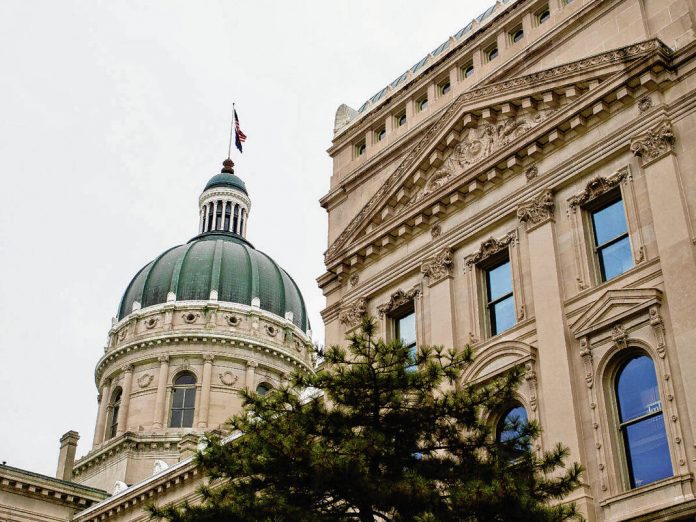With last week’s release of the Senate Republican budget, three proposals now stand alongside each other and demonstrate the sometimes conflicting priorities of senators, House lawmakers and Gov. Eric Holcomb.
All three spend roughly the same amount of money – though Holcomb’s budget ended up at $44 billion compared to the General Assembly’s $43.4 billion – and the bulk of each two-year spending plan is generally the same.
Still, there are some crucial differences.
What’s in the budget for higher ed?
The Commission for Higher Education has been in the process of drafting a new funding formula based on individualized goals and performance. Sen. Ryan Mishler, R-Mishawaka, explicitly excluded the network of Ivy Tech Community Colleges from this change, saying the school operates differently than the state’s other private institutions.
In the first year, Holcomb chose to increase higher education funding by 6% in the first year followed by 2%. The House opted for 4% in the first year with the same increase in the second.
Meanwhile, the Senate agreed to 4% for the first year but then 6% in the next, when they want to begin phasing in the newer funding formula.
Senate Republicans opted to retain language in their budget proposal that bars state funding for an Indiana University research institution, though it didn’t clarify how such a rule would be enforced.
The amendment to strip funding from the Kinsey Institute for Research in Sex, Gender and Reproduction narrowly passed the House on a 53-34 vote. The school isn’t directly funded in the state budget – rather, Indiana University receives a lump sum and decides how to spend it.
Another higher education institution lost out under the Senate budget: Martin University, the state’s only predominantly Black institution.
Holcomb earmarked $10 million to bolster the school’s offerings, specifically the low-income, minority populations served by the university. House Republicans kept that funding but Mishler said that amounted to roughly $40,000 for each of the school’s estimated 250 students.
Instead, every higher education institution would have access to the $10 million over the biennium for minority, first-generation and low-income students.
“We felt we could get more students if we allow any school in the state of Indiana, both public and private, to do these programs,” Mishler said, adding that only schools with a physical presence in Indiana quality.
Senate Minority Leader Greg Taylor, whose caucus didn’t get much advance notice on the budget proposal, said the Democrats would need time to review.
“The governor’s position on that situation was clear: he wanted to support a minority institution – an Indiana Black institution that has contributed considerably,” Taylor, D-Indianapolis, said. “I think I’m going to have some long conversations with my colleagues.”
Expenditures for Hoosier children
The two supermajorities took slightly different approaches when it came to eligibility for On My Way Pre-K, a program that subsidizes early childhood education for low-income parents.
House lawmakers increased the cutoff for earnings from 127% of the federal poverty level to 138%, raising the limit from just over $35,000 annually for a family of four to $38,295. They also increased the annual grant cap from $6,800 to $7,500.
Each budget proposal included $1.25 billion for general capital expenditures, though senators opted to include an $89 million amateur sports facility to be located at – but not used by – IUPUI in downtown Indianapolis.
The $1.25 billion includes the Westville Correctional Facility, the co-locating of the Indiana schools for visually impaired and hearing impaired Hoosiers, the State Archives Building and the Potato Creek State Park Inn.
Each public higher education institution had their top capital request fully funded in cash.
Holcomb’s proposition aligned with House lawmakers. Senators opted for 150%, or $41,625 annually for a family of four, but didn’t change the annual grant cap.
None increased the amount of money that goes toward the program.
Sen. Fady Qaddoura, D-Indianapolis, said that increasing dollars for early childhood education and other child care solutions would shore up the workforce and be more beneficial in the long run.
“Most research institutions and educators have confirmed that investing in early childhood education is the most strategic investment to be sure that we improve high school graduation rates and college enrollment rates,” he said. “We need to upskill people and we need to invest in workforce development.”
Qaddoura added that the House had been “inconsistent” with their policies, capping voucher eligibility at 400% of the annual income allowed for free or reduced lunch eligibility.
“Under current law, if you make $30,000 a year or more (for families of three or less), you are too rich in the eyes of the state to send your child to a high-quality, early childhood education,” Qaddoura said.
In committee, Mishler highlighted a Senate tax credit for $2.5 million annually for employers who assist their employees with child care expenditures. Business leaders have warned that, without child care reform, Indiana will struggle to attract new businesses because workers cannot afford the cost.
“Housing and childcare seem to be two big players and we thought something like this would help,” Mishler said.
Perhaps the biggest difference between the three budget proposals was around voucher language, as previously detailed. But the Senate budget additionally includes a $240 million boost for special education over the two-year period, $100 million for learning-loss recovery and a $95 million increase to complexity funding increase for schools with students from low-income families.
Budget writers will negotiate a final budget compromise after the April 19 revenue forecast, which predicts the state’s economic fortunes for the next two years. Lawmakers usually leave a little flexibility in their budgets to account for change following the forecast, so expenditures are not finalized.
Session must conclude by April 29.
This story is republished from indianacapitalchronicle.com, an independent, not-for-profit news organization that covers state government, policy and elections.





